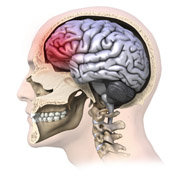Research and Innovation, UNL Office of

Center for Brain, Biology, and Behavior: Faculty Publications
Document Type
Article
Date of this Version
4-9-2009
Citation
2009 Authors
Abstract
Purpose. Invasive intracranial recordings have suggested that high-frequency oscillation is involved in epileptogenesis and is highly localized to epileptogenic zones. The aim of the present study is to characterize the frequency and spatial patterns of high-frequency brain signals in childhood epilepsy using a non-invasive technology. Methods. Thirty children with clinically diagnosed epilepsy were studied using a whole head magnetoencephalography (MEG) system. MEG data were digitized at 4 000 Hz. The frequency and spatial characteristics of high-frequency neuromagnetic signals were analyzed using continuous wavelet transform and beamformer. Threedimensional magnetic resonance imaging (MRI) was obtained for each patient to localize magnetic sources. Results. Twenty-six patients showed highfrequency (100-1 000 Hz) components (26/30, 86%). Nineteen patients showed more than one high-frequency component (19/30, 63%). The frequency range of high-frequency components varied across patients. The highest frequency band was identified around 910 Hz. The loci of high-frequency epileptic activities were concordant with the lesions identified by magnetic resonance imaging for 21 patients (21/30, 70%). The MEG source localizations of high-frequency components were found to be concordant with intracranial recordings for nine of the eleven patients who underwent epilepsy surgery (9/11, 82%). Conclusion. The results have demonstrated that childhood epilepsy was associated with high-frequency epileptic activity in a wide frequency range. The concordance of MEG source localization, MRI and intracranial recordings suggests that measurement of high-frequency neuromagnetic signals might provide a novel approach for clinical management of childhood epilepsy.
Included in
Behavior and Behavior Mechanisms Commons, Nervous System Commons, Other Analytical, Diagnostic and Therapeutic Techniques and Equipment Commons, Other Neuroscience and Neurobiology Commons, Other Psychiatry and Psychology Commons, Rehabilitation and Therapy Commons, Sports Sciences Commons


Comments
Epileptic Disord 2009; 11 (2): 113-25 doi: 10.1684/epd.2009.0253